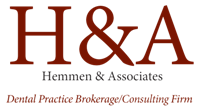How to Value a Dental Practice in Today’s Economy
Published on
- 21-08-2025
Read Time
- 7 minutes read
How to Value a Dental Practice in Today’s Economy

When it comes to selling or buying a dental practice in the United States, one question towers above all others: How to value a dental practice in 2025?
The answer is more complex than ever before. Economic conditions, inflationary pressures, rising operational costs and shifting patient behaviors have all changed the way buyers and sellers approach dental practice valuation.
In this article, we’ll walk through dental practice valuation in an inflationary economy, explain current dental valuation methods in the USA and share actionable tips on how to assess dental practice value with rising costs. Whether you’re a seller planning your exit strategy or a buyer looking to invest wisely, understanding these nuances can make all the difference.
Why Dental Practice Valuation Has Changed in 2025
Traditionally, dental practice values were relatively stable year to year. Today, that’s no longer the case. Several market forces are reshaping valuations:
- Inflation and Cost of Supplies – The cost of dental materials, equipment and lab work has risen significantly in the last few years.
- Staffing Costs – Hygienists, dental assistants and administrative staff are commanding higher wages, impacting overhead.
- Interest Rates – Higher borrowing costs affect what buyers are willing and able to pay.
- Patient Demand Shifts – Tele-dentistry, cosmetic dentistry demand and preventive care trends all influence revenues.
When inflation is high, gross revenue alone doesn’t paint the full picture. Buyers are looking at operational efficiency and net profitability more closely than ever.
Core Dental Practice Valuation Methods Used in the USA
While there’s no single “correct” number, there are three primary methods that remain industry standards. Most brokers and dental CPAs use a combination of these to reach a fair market value.
1. Income-Based Valuation
This method looks at the practice’s ability to generate profit. The most common approach is the capitalization of earnings or discounted cash flow (DCF) method.
- Capitalization of Earnings takes your adjusted net income and applies a capitalization rate based on risk, location, and growth potential.
- DCF Analysis projects future earnings and discounts them back to today’s value.
This method is favored in 2025 because it adjusts for the economic impact on dental practice valuation, rising costs, inflation and competitive pressures are all factored in.
2. Market-Based Valuation
This compares your practice to similar ones recently sold in your area or specialty. However, in today’s market, direct comparisons can be tricky, not every recent sale reflects the same inflation pressures or local demand.
3. Asset-Based Valuation
This approach values your practice based on the fair market value of tangible and intangible assets:
- Equipment, furniture and technology
- Leasehold improvements
- Goodwill (patient base, brand reputation)
In an inflationary economy, asset values can rise, but their resale worth depends on how up-to-date they are.
How Inflation Changes the Valuation Conversation
In a normal economy, practices with steady revenues and a loyal patient base command premium prices. In 2025’s environment, buyers are drilling deeper into cost structures.
Here’s how dental practice valuation in an inflationary economy looks different:
- Adjusted Net Profit Matters More – Buyers focus on EBITDA (earnings before interest, taxes, depreciation and amortization) after accounting for rising expenses.
- Efficiency Is a Selling Point – Practices that have optimized scheduling, reduced supply waste, or negotiated better vendor terms can justify a higher price.
Predictable Cash Flow – Recurring patient visits and stable hygiene schedules offset uncertainty.
Step-by-Step: How to Assess Dental Practice Value With Rising Costs
- Gather Financial Records (3–5 Years)
Include income statements, tax returns and production reports. Adjust for one-time or non-recurring expenses. - Normalize Owner Compensation
Adjust for what it would cost to replace the owner with an associate dentist at market rates. - Review Expense Trends
Identify cost categories affected most by inflation, lab work, wages, materials and project realistic future costs. - Evaluate Production Mix
High-margin procedures like implants and cosmetic dentistry can counterbalance cost increases. - Factor in Patient Retention Rates
Strong loyalty and consistent recall rates can mitigate economic headwinds. - Engage a Dental Practice Valuation Expert
A broker or CPA who specializes in dentistry will ensure the valuation reflects current market realities.
Practical Tips for Sellers in 2025
If you’re selling:
- Update Your Technology – Digital scanners, modern imaging and efficient patient management systems boost buyer confidence.
- Optimize Overhead – Lower expenses before listing to show stronger profit margins.
Plan Your Timing – If interest rates drop, buyer demand may surge, lifting valuations.
Practical Tips for Buyers in 2025
If you’re buying:
- Scrutinize Net Income Over Gross – Rising costs can hide behind top-line numbers.
- Ask About Vendor Contracts – Locked-in rates for supplies or lab work can improve profitability.
Consider Long-Term Potential – Some practices may be undervalued due to short-term inflation effects.
Knowing How to value a dental practice in 2025 requires more than plugging numbers into a formula. It’s about understanding current dental valuation methods in the USA, factoring in economic impacts, and making realistic projections in an environment where costs are shifting.
Whether you’re preparing to sell, buy, or simply want to know your practice’s worth, a valuation grounded in today’s economic reality will set you up for better decisions and better results.
